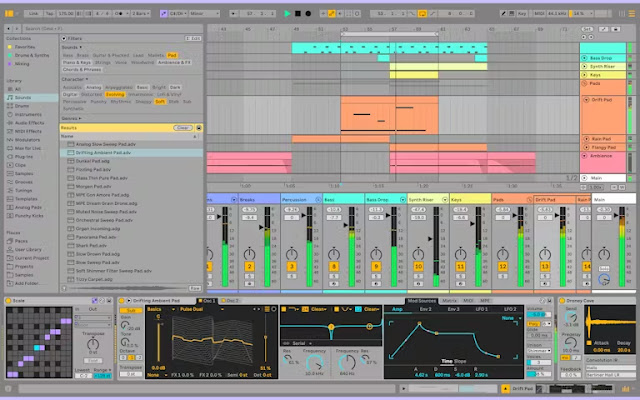How to use Simpler
Using Simpler with Found Sounds
Importing Samples into Simpler
Import an audio file into Simpler by dragging the audio onto the space where it says “Drop an Instrument or Sample Here” on an empty MIDI track.
Using Simpler
Simpler has three distinct modes – Classic, One-Shot and Slice. You can change mode by clicking on each of the labelled tabs on the device’s left hand side.
Classic
Classic mode plays back the sample as a classic sampler does, where different notes on the keyboard play back the pitch of the sample differently (high notes play high pitch, low notes play low pitch). It also has what is known as an ADSR envelope, which alters how the volume of the sound changes over time.
One-Shot
Simpler’s One-Shot mode plays the sample all the way through each time you trigger it. Using different keys or pads will change the pitch.
To ensure that the correct part of the file is played back as intended, it’s important to understand how to adjust the points at which playback starts and ends.
You can further adjust how the sample sounds by defining the fade in and fade out times.
Experiment with how different MIDI notes adjust the pitch and playback speed of the sample via a MIDI keyboard or Push.
Ask yourself… which samples sound better at higher or lower pitches?
You can also transpose your sample to change its pitch.
Slice
Slice mode is useful when working with longer recordings or multiple takes within one file.
Slice by Transient selects the loudest parts of the recording and splits the resulting slices across a selection of MIDI notes. This is useful with recordings that have sounds in succession, like tapping on a drum, bouncing a basketball or even crinkling a piece of paper.
Individual start points can be manually moved as necessary, but the Slice by Transient feature often provides a quick and easy starting point.
A creative possibility with this feature is to adjust the sensitivity while playing a single MIDI note to somewhat randomize which part of the audio file is played back.
Further explanation
The core concept of this method is explained nicely in Ninajirachi’s One Thing video.
Watch: One Thing: Ninajirachi – Textured drum layers



Comments
Post a Comment